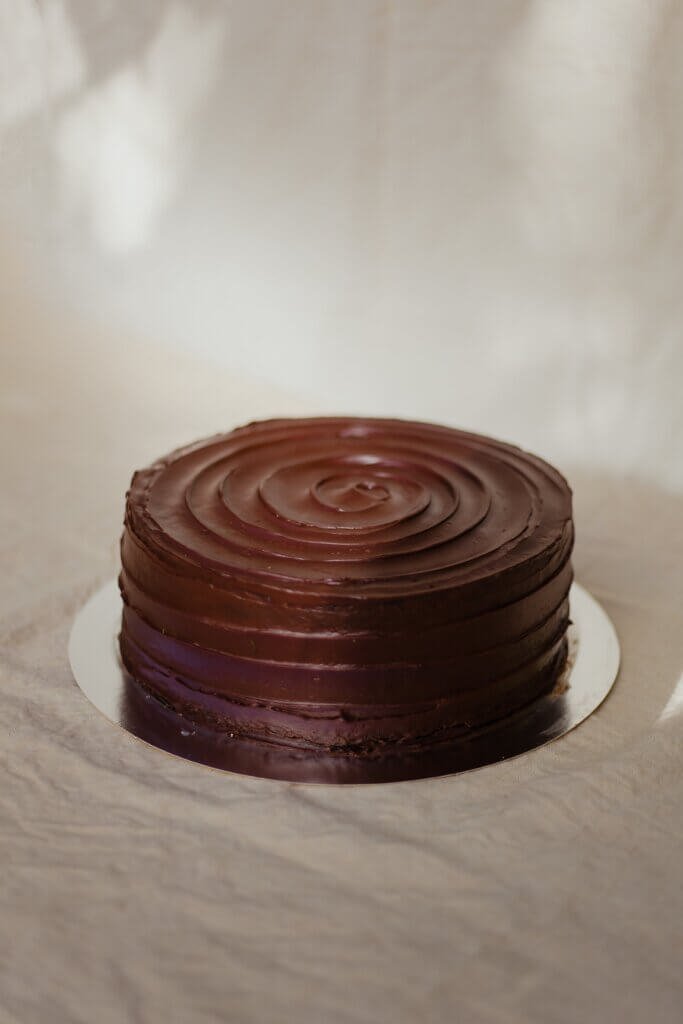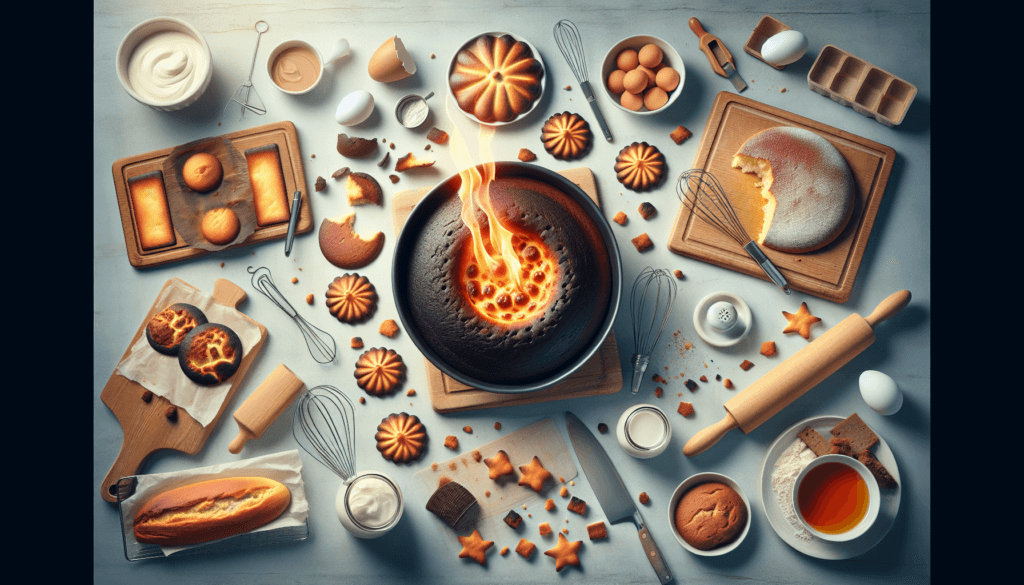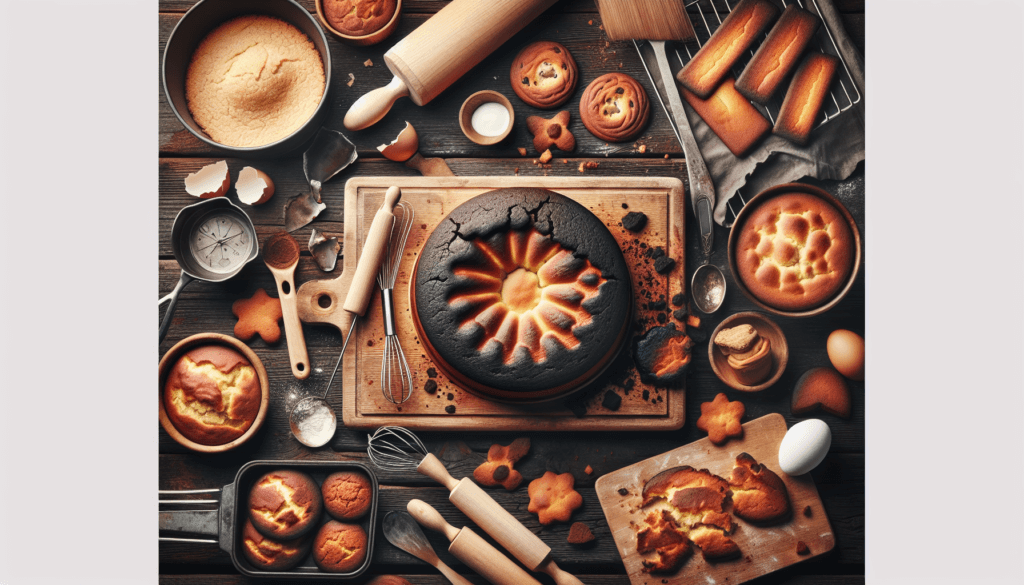You love spending time in the kitchen, whisking, measuring, and creating delicious baked goods. But sometimes, despite your best efforts, things don’t turn out as planned. Don’t worry, we’ve all been there. In this article, you’ll find simple and practical tips on how to troubleshoot common baking mistakes. From sunken cakes to burnt cookies, we’ve got you covered. So put on your apron and get ready to elevate your baking game with these helpful solutions.

Baking Mistake: Flat or Sunken Cake
A flat or sunken cake can be disappointing, but there are several possible causes and solutions for this issue. One possible cause is incorrect oven temperature. If your oven is too hot or too cold, it can affect the rise of the cake. To solve this, preheat the oven correctly by following the recipe’s instructions.
Another possible cause of a flat or sunken cake is overmixing the batter. When you overmix, you incorporate too much air, which can cause the cake to collapse during baking. To avoid this, follow proper mixing techniques. Mix until the ingredients are just combined and no more.
Insufficient leavening agents can also lead to a flat or sunken cake. Leavening agents, such as baking powder or baking soda, help the cake rise. Make sure to check the freshness of these ingredients because they can lose their effectiveness over time. If they are expired or not potent enough, your cake may not rise properly.
Lastly, using the incorrect pan size or type can affect the outcome of your cake. If the pan is too small, the batter may overflow, resulting in a flat cake. Conversely, if the pan is too large, the cake may spread thin and also turn out flat. Always use the correct pan size specified in the recipe.
Baking Mistake: Dry or Dense Cake
Nobody likes a dry or dense cake, but fortunately, there are solutions to this baking mistake. Overbaking is a possible cause of a dry or dense cake. Check the baking time closely and remove the cake from the oven as soon as a toothpick inserted into the center comes out clean. Remember that oven temperatures can vary, so it’s essential to monitor the cake closely to avoid overbaking.
Incorrect measurements can also result in a dry or dense cake. Using too much flour or not enough liquid can throw off the balance of the ingredients and affect the texture of the cake. To avoid this, measure ingredients accurately using the appropriate measuring tools, such as measuring cups and spoons.
Another possible cause of a dry or dense cake is a lack of moisture. Adding moisture to the recipe can help keep the cake moist and tender. Some ways to add moisture include using ingredients like buttermilk, yogurt, or sour cream, or incorporating fruits or vegetables. Experiment with different recipes to find what works best for you.
Insufficient fat is another factor that can contribute to a dry or dense cake. Fat contributes to the tenderness and moisture in a cake. If a recipe calls for butter or oil, make sure to use the recommended amount. Adding too little fat can result in a dry and dense texture.

Baking Mistake: Burnt or Dark Edges
If your cake or baked goods have burnt or dark edges, there are a few possible causes and solutions. Firstly, a high oven temperature can cause the edges to brown or burn before the middle is fully cooked. Adjust the oven temperature accordingly and decrease it by 10 to 15 degrees Fahrenheit. This will allow the cake to bake more evenly, with the edges turning out golden brown instead of burnt.
Uneven heat distribution in the oven can also contribute to burnt or dark edges. Use an oven thermometer to check if your oven is heating evenly. If there are hot spots, consider rotating the cake halfway through the baking time to ensure even cooking. This can help prevent the edges from getting too dark.
The type of pan you use can also affect how your cake bakes. Dark or shiny pans absorb and retain more heat, which can lead to darker edges. Opt for light-colored pans instead, as they reflect heat and provide more even baking. Using the correct type of pan can help prevent burnt or dark edges.
Baking Mistake: Gummy or Undercooked Center
If you’ve ever experienced a gummy or undercooked center in your baked goods, there are a few possible causes and solutions. Underbaking is one possible cause, where the baking time is not sufficient to fully cook the center. Increase the baking time as needed, keeping in mind that different ovens may require slight adjustments.
If your oven temperature is too low, it can result in a gummy or undercooked center. Use an oven thermometer to ensure that your oven is reaching the correct temperature specified in the recipe. Making sure your oven is properly calibrated can help prevent undercooked centers.
Using the incorrect pan type can also impact the baking process. Some pans conduct heat differently, and using the wrong pan can result in uneven cooking. Follow the recipe’s instructions regarding the type of pan to use, and if necessary, invest in the recommended pan to achieve the best results.

Baking Mistake: Hard or Tough Cookies
Nobody wants a batch of hard or tough cookies, but luckily there are solutions to this common baking mistake. Overworking the dough is one possible cause of hard or tough cookies. When you mix the dough for too long, gluten develops, resulting in a tougher texture. Mix the dough just enough to combine the ingredients, avoiding excessive mixing.
The consistency of the butter you use can also impact the texture of your cookies. If the butter is too soft or melted, it can cause the cookies to spread too thin and become hard. Use properly softened butter for the recipe and follow the instructions regarding its consistency.
Excessive flour can make cookies hard or tough. When measuring flour, avoid packing it too tightly into the measuring cup. Instead, use a spoon to gently scoop the flour into the cup and level it off with a flat edge. This allows for a more accurate measurement and prevents using too much flour.
Overbaking is another cause of hard or tough cookies. Keep a close eye on the baking time and remove the cookies from the oven as soon as they appear lightly golden around the edges. They will continue to firm up as they cool, so it’s essential to monitor the baking time closely.
Baking Mistake: Flat and Spreading Cookies
If your cookies turn out flat and spread too much during baking, there are a few possible causes and solutions to consider. Warm butter or dough is one possible cause. It’s important to use cool butter or chilled dough because warm dough spreads more quickly. Chilling the dough before baking can help prevent excessive spreading.
Insufficient chilling time can also contribute to flat and spreading cookies. After shaping the dough into cookies, it’s crucial to give it enough time to chill in the refrigerator. This allows the butter to solidify, resulting in less spreading during baking. Follow the recipe’s instructions regarding chilling times.
Incorrect ratios of ingredients can affect the texture and spread of cookies. Too much sugar or fat, for example, can cause the cookies to spread excessively. Adjust the ingredient ratios according to the recipe and ensure that you are using the accurate measurements specified.

Baking Mistake: Sunken or Cracked Muffins
Sunken or cracked muffins can be frustrating, but there are solutions to troubleshoot this common baking mistake. Overmixing the batter is one possible cause. When you overmix, you develop too much gluten, which can result in muffins that sink or crack. Mix the batter gently, just until the ingredients are combined.
Using incorrect leavening agents can also lead to sunken or cracked muffins. Check the freshness of the baking powder or baking soda you are using. Expired or ineffective leavening agents can cause muffins to have an uneven rise or collapse. Make sure to use fresh leavening agents for the best results.
If your oven temperature is too low, it can affect the rise of the muffins and result in sinking or cracking. Check the oven temperature using an oven thermometer to ensure it matches the recommended temperature in the recipe. Increase the oven temperature if necessary to achieve proper rising.
Baking Mistake: Sticky or Soggy Pie Crust
Dealing with a sticky or soggy pie crust can be a challenge, but there are solutions to tackle this baking mistake. Insufficient baking time is one possible cause. If the pie crust is not baked long enough, it can turn out sticky or soggy. Extend the baking time as needed until the crust is golden brown and cooked through.
High humidity can also affect the texture of a pie crust. Moisture in the air can make the crust become soft and sticky. Control humidity levels in your kitchen by using a dehumidifier or air conditioner. This can help prevent the pie crust from becoming too moist.
Overfilling the pie can lead to a sticky or soggy crust as well. If there is too much filling, it can release excess moisture during baking, which can make the crust soggy. Follow the recipe’s instructions for filling the pie and avoid overfilling to maintain the integrity of the crust.

Baking Mistake: Cracked Cheesecake
Cracks in a cheesecake can be disappointing, but there are solutions to prevent and fix this baking mistake. Overbaking is a common cause of cracked cheesecakes. To avoid this, bake the cheesecake for a slightly shorter time than recommended in the recipe. The center should still jiggle slightly when gently shaken.
Sudden temperature changes can also result in cracks in the cheesecake. When the cheesecake is exposed to a drastic change in temperature, it can cause it to crack. Gradually change oven temperatures by turning it off and leaving the cheesecake in the oven with the door slightly open for a few minutes before removing.
Inadequate cooling time can contribute to cracks as well. After baking, allow the cheesecake to cool slowly and evenly before transferring it to the refrigerator. Rapid cooling can cause the cheesecake to contract too quickly and crack. Follow the recipe’s instructions for cooling time and be patient.
Baking Mistake: Dense or Chewy Bread
If you’ve ever ended up with a dense or chewy bread, there are a few possible causes and solutions to address this baking mistake. Insufficient kneading can result in a dense texture. Bread dough needs to be thoroughly kneaded to develop gluten, which gives the bread structure. Make sure to knead the dough for the recommended amount of time specified in the recipe.
Incorrect yeast amount can also affect the texture of the bread. Too little yeast can result in a dense loaf, while too much yeast can cause the bread to rise too quickly and then collapse. Measure and add yeast properly according to the recipe’s instructions to achieve the desired texture.
Underproofing, or not allowing the bread dough to rise sufficiently, can lead to a dense and heavy bread. Ensure you follow the recommended proofing times specified in the recipe. The dough should double in size during proofing, indicating that the yeast has had enough time to create a light and airy texture.
By understanding the possible causes and implementing the suggested solutions for common baking mistakes, you can troubleshoot and improve your baking skills. Remember to preheat the oven correctly, follow proper mixing techniques, and measure ingredients accurately. Take into account pan sizes and types, monitor baking times closely, and make adjustments as necessary. With these tips in mind, you’ll be well on your way to achieving delicious and successful baked goods.


